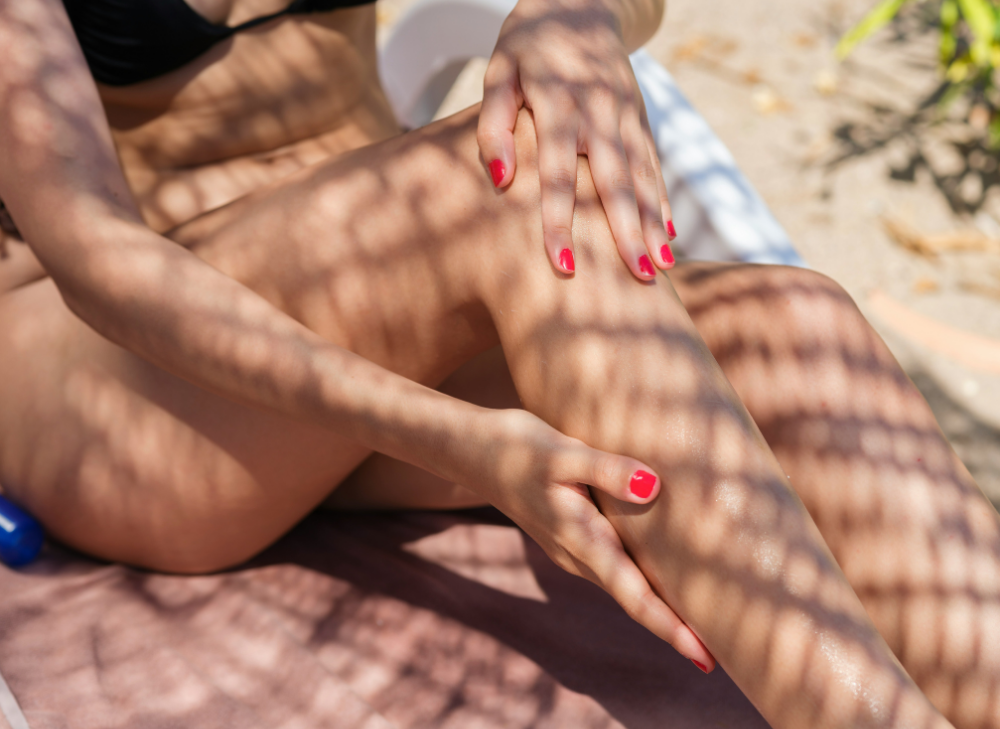My Journey with Erythropoietic Protoporphyria in Italy
Living with Erythropoietic Protoporphyria (EPP) means the sun and I have a complicated relationship. In Arizona, I’ve developed survival strategies for intense desert heat and sunlight. But traveling to Italy presented new challenges—and surprising advantages. This page shares my experience navigating a sun-sensitive condition while still embracing la dolce vita.
Understanding EPP and Sun Protection
For those unfamiliar, Erythropoietic Protoporphyria is a rare genetic condition that causes extreme photosensitivity. Unlike typical sunburn, EPP reactions happen within minutes of sun exposure and cause burning, stinging pain, swelling, and sometimes scarring. There’s no true “sunscreen” for EPP—physical barriers are essential.
Italy’s abundant sunshine and outdoor culture requires thoughtful planning for anyone with photosensitivity. However, I’ve discovered that Italian architecture and lifestyle actually offer some unexpected advantages for sun protection:
- Narrow medieval streets provide natural shade
- The riposo (afternoon rest) coincides with peak sun hours
- Renaissance architecture features porticoes and covered walkways
- Indoor-outdoor living with awnings and shutters is standard
- Late dining culture means evening, not midday, socializing
Essential Italian Sun Protection Phrases
| English | Italian | Pronunciation |
| I need to stay in the shade | Ho bisogno di stare all’ombra | oh bee-ZON-yo dee STAR-eh all-OM-brah |
| Is there a shaded path? | C’è un percorso ombreggiato? | cheh oon per-COR-so om-breh-JAH-toh |
| Do you have indoor seating? | Avete posti a sedere all’interno? | ah-VEH-teh POS-tee ah seh-DEH-reh all-in-TEHR-no |
| Where can I buy a hat/umbrella? | Dove posso comprare un cappello/un ombrello? | DOH-veh POS-so com-PRAH-reh oon cap-PEL-lo/oon om-BREL-lo |
| I have a medical sun sensitivity | Ho una fotosensibilità per motivi medici | oh OO-nah fo-to-sen-see-bee-lee-TAH per mo-TEE-vee MEH-dee-chee |
My Sun Protection Strategy for Italy
Clothing & Accessories
- UPF 50+ Clothing – Lightweight, breathable, full-coverage garments from brands like Coolibar and Solbari
- Wide-brimmed Hats – Packable options with at least 4″ brims all around
- UV-blocking Parasols – More common and accepted in Italy than in the US
- UPF Gloves – Fingerless options for better dexterity while maintaining protection
- Face Shields and Scarves – For maximum coverage during peak hours
- Polarized, Wraparound Sunglasses – Protect eyes and surrounding skin
Timing & Planning Strategies
- Early Morning/Evening Activities – Schedule outdoor sightseeing before 10am and after 5pm
- Indoor Midday Plans – Museums, churches, and extended lunches during peak sun hours (11am-4pm)
- Transportation Planning – Research shaded walking routes or use taxis/public transport to minimize sun exposure
- Accommodations with Shade – Hotels with indoor pools, covered terraces, or courtyard gardens
- Researching Shade Maps – I create custom Google Maps marking shaded streets and routes
Digital Tools
- UV Index Apps – QSun and UVLens help track dangerous exposure times
- Shade Finder Apps – Helps locate shaded areas in unfamiliar cities
- Italian Weather Apps – Local forecasts tend to be more accurate than international ones
City-Specific Sun Protection Guides
Rome
Best Shaded Areas:
- Villa Borghese Gardens
- Ancient ruins with partial covering (Palatine Hill)
- Vatican Museums (entirely indoor)
- Trastevere’s narrow streets
- Churches (always cool and dark inside)
Challenging Areas:
- Spanish Steps (fully exposed)
- St. Peter’s Square (no shade)
- Colosseum (limited shade options)
Tip: Rome’s many fountains allow for cooling off without swimming. Dipping a scarf in fountain water and wrapping it around your neck provides heat relief.
Venice
Best Shaded Areas:
- Narrow calli (streets) throughout the city
- Covered portions of St. Mark’s Square
- Waterbus (vaporetto) covered seating areas
- Venetian Arsenal area
Challenging Areas:
- Rialto Bridge (exposed)
- Grand Canal boat rides (opt for covered water taxis)
- Murano Glass Island (limited shade)
Tip: Venice is one of the more EPP-friendly Italian cities due to its narrow streets and frequent indoor options.
Florence
Best Shaded Areas:
- Boboli Gardens (many tree-lined paths)
- Uffizi Gallery (entirely indoor)
- Oltrarno neighborhood streets
- Ponte Vecchio (partially covered)
Challenging Areas:
- Piazzale Michelangelo (exposed viewpoint)
- Duomo square (limited shade)
- Ponte Santa Trinita (no covering)
Tip: Florence has excellent leather markets where you can find beautiful wide-brimmed hats.
Emergency Management
Despite careful planning, sun emergencies happen. Here’s my protocol:
- Immediate Shade Finding – Duck into any available shelter (churches are ideal – cool, dark, and always open)
- Cold Compress Application – Bottled water and a handkerchief work in a pinch
- Pain Management – I carry both topical and oral medication
- Rest Period – Allow skin to calm before continuing
- Itinerary Adjustment – Be flexible and have backup indoor plans
Medical Resources in Italy
- Farmacia (Pharmacy) – Identified by green crosses, most pharmacists speak English
- Guardia Medica – After-hours medical service
- Emergency Number – 118 for ambulance services
- International Medical Care – Cities have private English-speaking medical services
I carry a medical letter explaining EPP in both English and Italian, which has been helpful when explaining my condition to hotels, tour guides, and occasionally medical staff.
Unexpected Benefits of Italian Culture for EPP
- Riposo hours – The traditional afternoon break coincides perfectly with peak sun hours
- Late dinner culture – Evening meals (8-10pm) mean socializing when the sun is down
- Indoor-outdoor design – Restaurants often have both options available
- Public water fountains – Stay hydrated easily with Rome’s nasoni (drinking fountains)
- Fashion acceptance – No one looks twice at parasols, gloves, or dramatic hats
- Excellent public transportation – Minimizes walking in exposed areas
Tips for Sun-Sensitive Travelers to Italy
- Choose accommodations strategically – Central locations mean less transit time outdoors
- Research indoor alternatives for everything – Always have a backup plan
- Consider seasonal timing – Spring and fall offer milder sun with fewer crowds
- Embrace nighttime Italy – Some of the most magical experiences happen after sunset
- Connect with locals – Italians are often delighted to share their own sun-avoiding secrets


